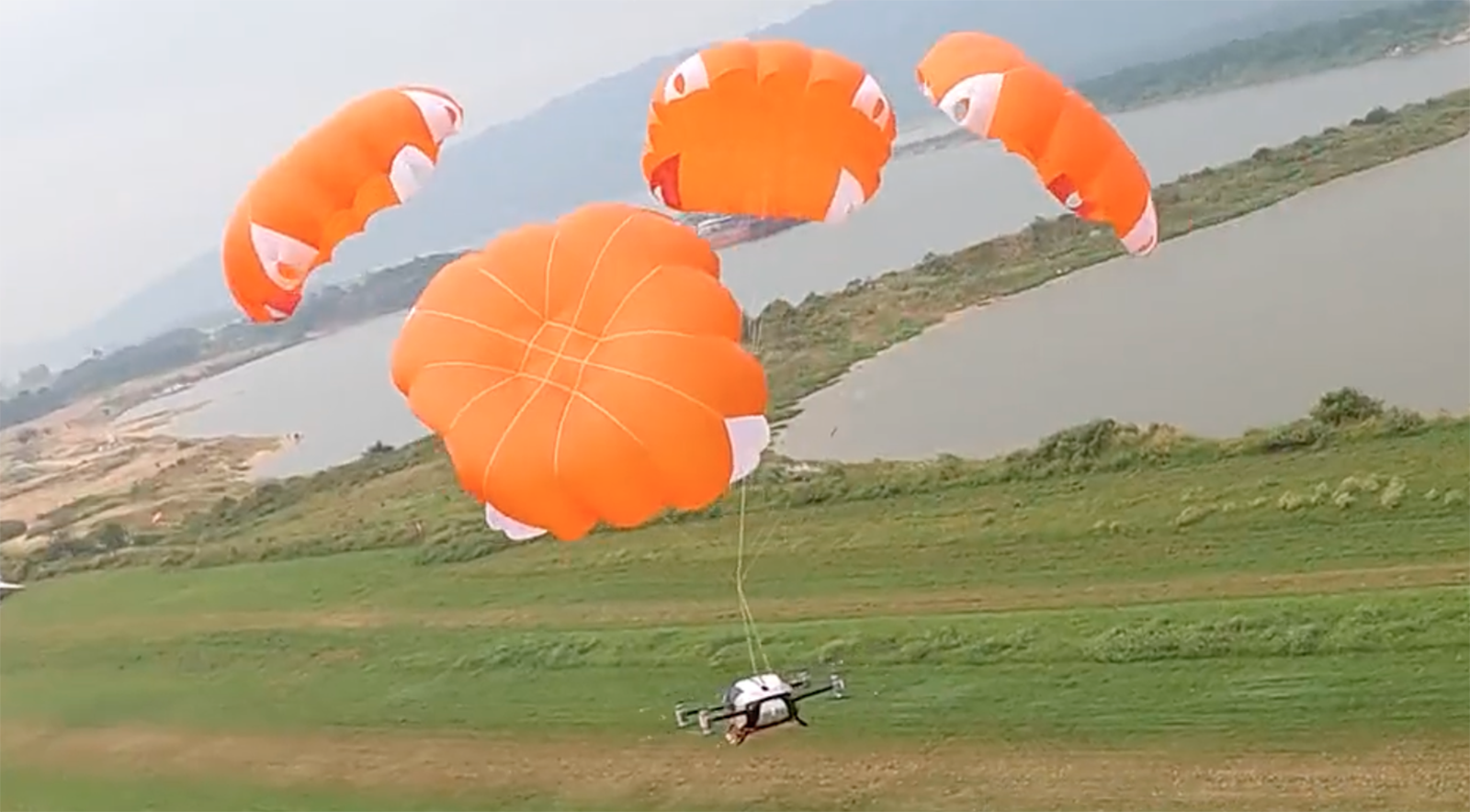Stay Up to Date
Submit your email address to receive the latest industry and Aerospace America news.
Video shows the potential, but the concept has yet to catch on
A video released by AeroHT, an electric aircraft company in China, shows what is likely a first in advanced air mobility: an air taxi in flight deploying parachutes and falling to touch down in a field.
A few seconds into the video, we hear an explosive pop and see a flash of fire from the nose of the aircraft, a two-passenger design called Voyager. Four parachutes are ballistically carried clear of the electric aircraft’s eight rotors in a test of the company’s Innovative Multi-Parachute Safety System.
As far as my reporting shows, only one other air taxi company has come out publicly with a parachute plan. AutoFlight, also based in China, plans to offer such a system for its Prosperity aircraft. The vast majority of air taxi developers plan to rely on redundant motors and rotors to save their craft in an emergency.
Could the industry warm to the technology, as one general aviation company has?
“Parachutes could be a real [complement] to safety for AAM aircraft, like shown with Cirrus and others,” Mike Hirschberg, director of strategy for the Vertical Flight Society, says by email, referring to the Minnesota-based maker of small, fixed-wing aircraft.
But Hirschberg adds that regulators don’t want unguided parachutes dropping aircraft into cities, where many air taxis intend to operate, and says neither FAA nor the European Union Aviation Safety Agency give any credit for parachutes in the aircraft type certification process.
None of this is to say that air taxi makers have not, perhaps, looked into the technology.
“I’ll just tell you, I’m dealing with all but a few of the leading companies, in either discussions or development, right now,” says Erick Kinney, operations manager at Strong Enterprises, an Orlando parachute manufacturer that is owned by ASR-Pioneer.
Among the products that Strong makes are parachutes that are deployed via a ballistic rocket that could carry the chutes clear of rotors. The challenge, says Kinney, is that such a system weighs as much as an additional passenger.
Kinney doubts that FAA would require such safety equipment at any point, but he thinks the U.S. Congress might mandate it someday.
“You can’t buy a car without an airbag in it anymore, and we have seen some air taxi prototypes crash in flight tests now,” he says. “If we see more, public pressure will grow, and the ‘easy button’ solution is to just add parachutes.”
Patrick Waddick, president of innovations and operations at Cirrus Aircraft, says the company has built thousands of aircraft equipped with parachute safety systems. The company, which does not have an air taxi design, is the only manufacturer to factory install them on every aircraft it sells, Waddick says.
He says the company’s parachutes have been deployed more than 100 times, and over 200 people “have been returned to their families” safely because of them.
“I think there should be a lot of people that should be thinking about this carefully,” Waddick adds. “The parachute is a major selling point for us, and the very nature of urban air mobility as a business model depends on broader adoption of aircraft by the public and accessibility to personal aviation. If you want this to be commonplace, then people have to believe that they are as safe or safer doing this than jumping in a car.”
He said he’s been approached by some air taxi companies seeking advice about adding parachutes, but it “hasn’t been a full-court press.”
About paul brinkmann
Paul covers advanced air mobility, space launches and more for our website and the quarterly magazine. Paul joined us in 2022 and is based near Kennedy Space Center in Florida. He previously covered aerospace for United Press International and the Orlando Sentinel.
Related Posts
Stay Up to Date
Submit your email address to receive the latest industry and Aerospace America news.




